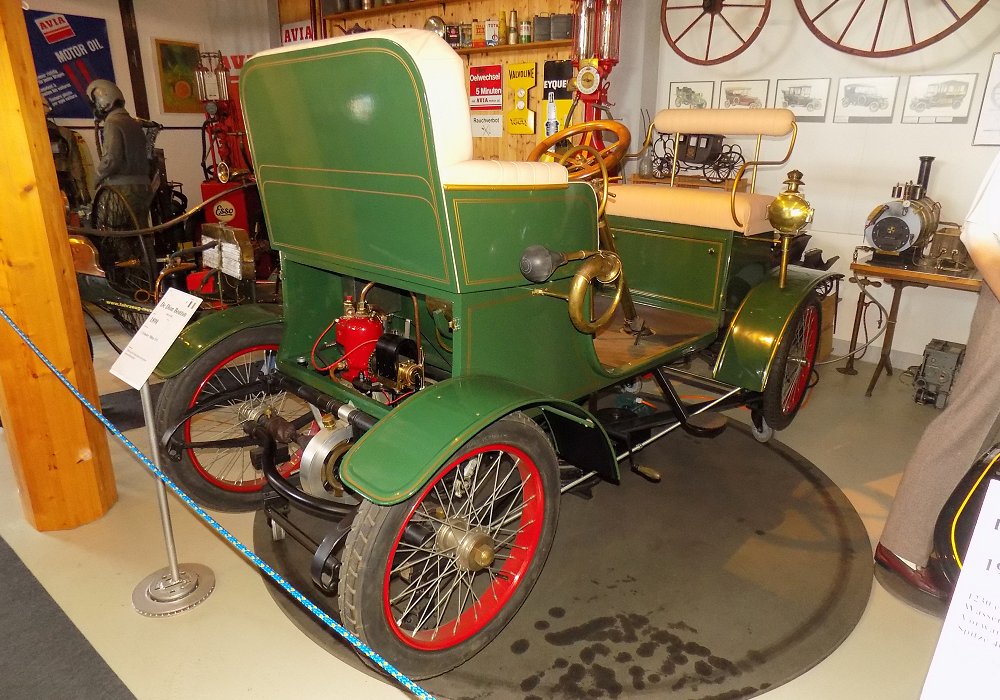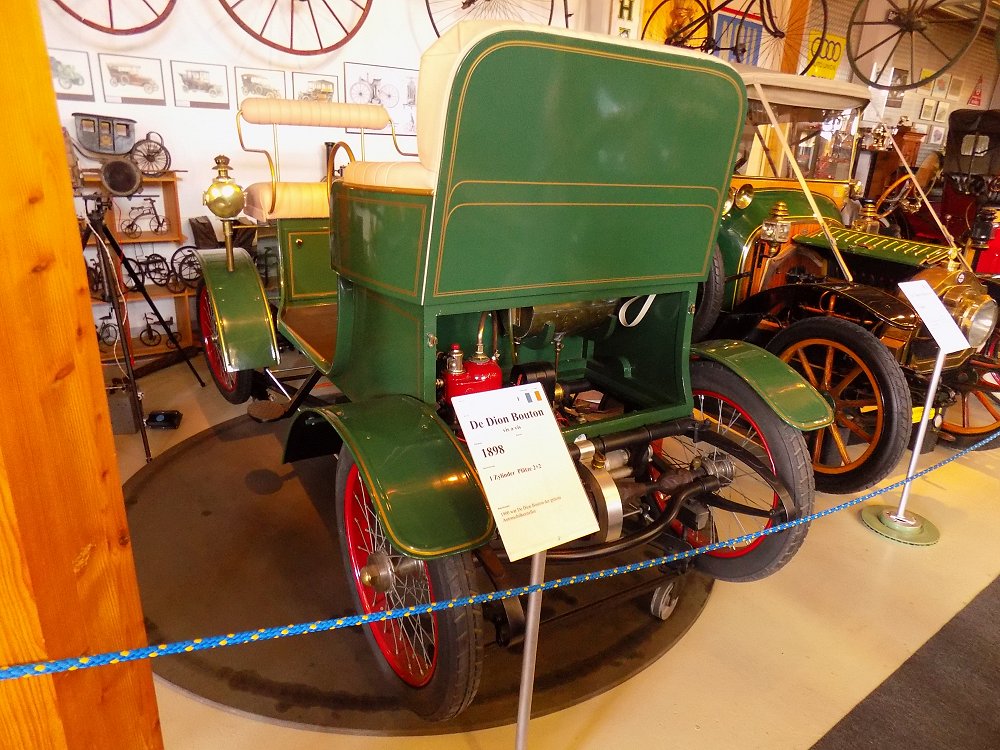Description
The De Dion-Bouton Type D Vis-à-Vis was an early automobile produced around 1901 by the pioneering French manufacturer De Dion-Bouton. It embodied the elegant and experimental spirit of the veteran motoring era, combining technical innovation with carriage-inspired styling. The “Vis-à-Vis” name refers to the seating arrangement, in which passengers sat facing each other—an influence from traditional horse-drawn carriages.
The Type D featured a compact, lightweight chassis constructed from tubular steel and wood, with a simple but refined body design. It typically had seating for two to four occupants, with the driver seated at the rear facing forward and the front passengers seated opposite, facing backward. This unusual arrangement was common in very early motor cars before the conventional forward-facing layout became standard.
Power came from a single-cylinder De Dion-Bouton engine mounted in the rear of the vehicle. The engine was usually air-cooled and had a capacity of around 402 cc, producing approximately 3.5 to 4.5 horsepower, depending on the specific configuration. Known for its smooth and high-revving operation, this engine was a significant advancement in early motoring and was widely copied or licensed by other manufacturers across Europe.
The power was transmitted to the rear axle via a two-speed gearbox and a final drive by chain. The vehicle used tiller steering and had relatively basic suspension, usually consisting of semi-elliptic leaf springs. Braking was primitive by modern standards, typically relying on a simple mechanical system that acted on the rear wheels or transmission.
Stylistically, the Type D retained many features of 19th-century carriages, including spoked wheels with pneumatic tires, a coach-like body, and an upright driving position. The absence of a windscreen or roof added to its open, exposed feel. Controls were minimal, but the build quality and attention to detail reflected the craftsmanship of the era.
The De Dion-Bouton Type D Vis-à-Vis was not just a curiosity—it represented the cutting edge of early automotive engineering and design. It was a relatively reliable and practical vehicle for its time, making it popular among wealthy early adopters of the motor car. The success of such models helped De Dion-Bouton become one of the world’s largest automobile manufacturers at the dawn of the 20th century.
Today, the Type D Vis-à-Vis is a highly collectible veteran car, often seen in events like the London to Brighton Veteran Car Run. Its historical importance and charming design make it a prized example of the earliest phase of motoring history.

